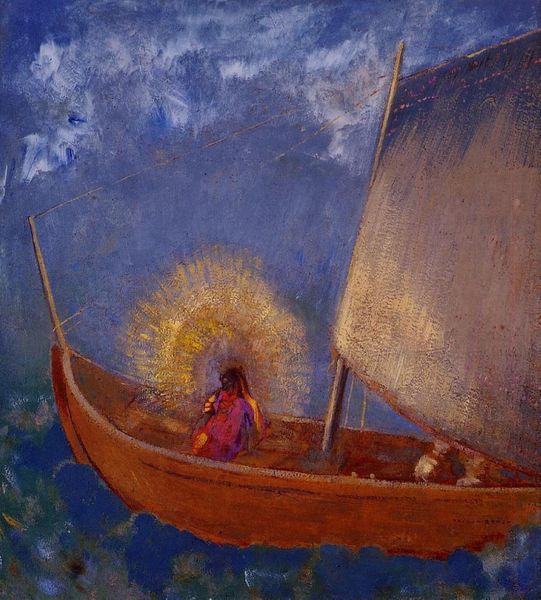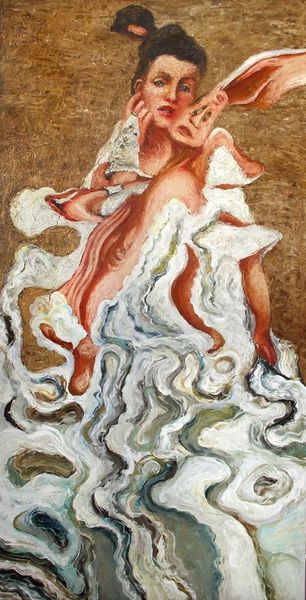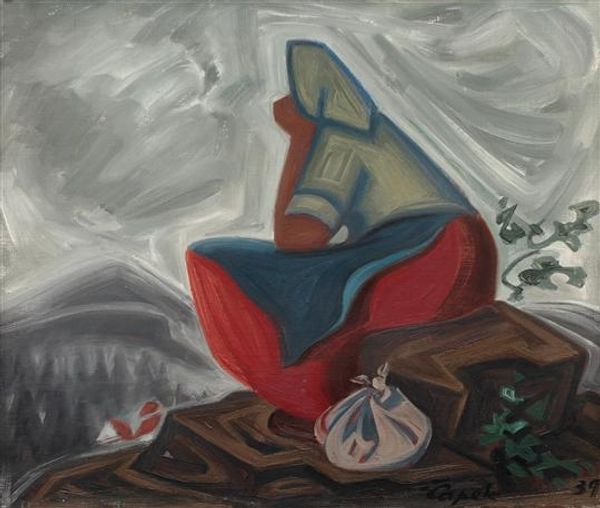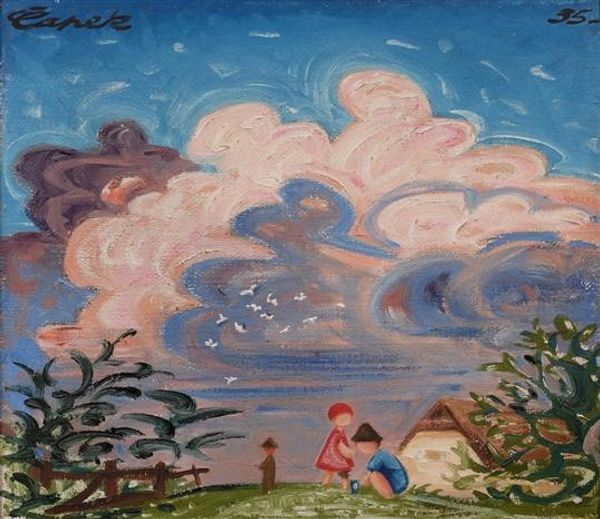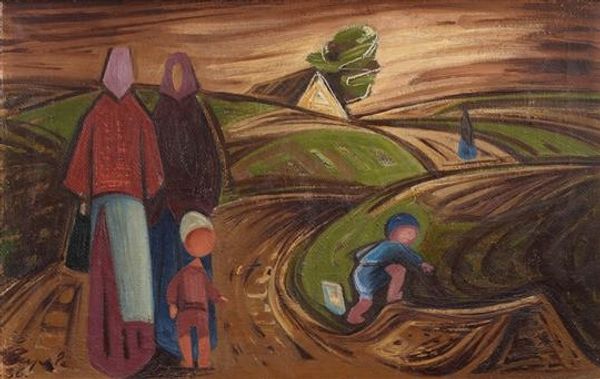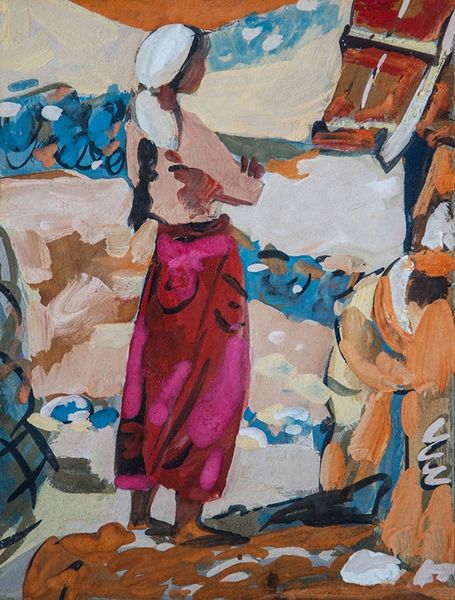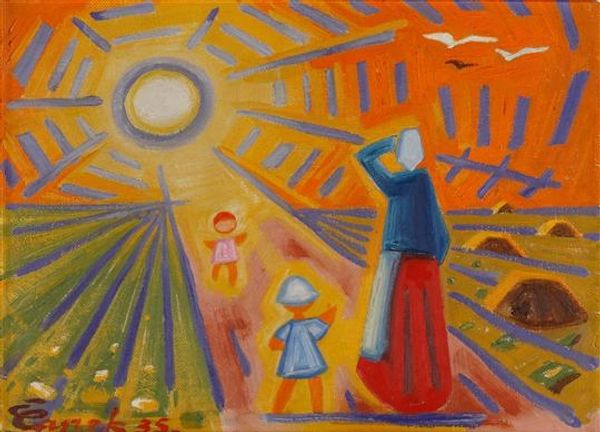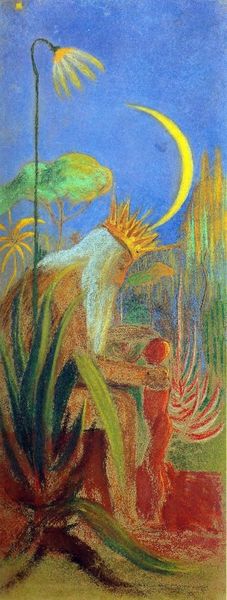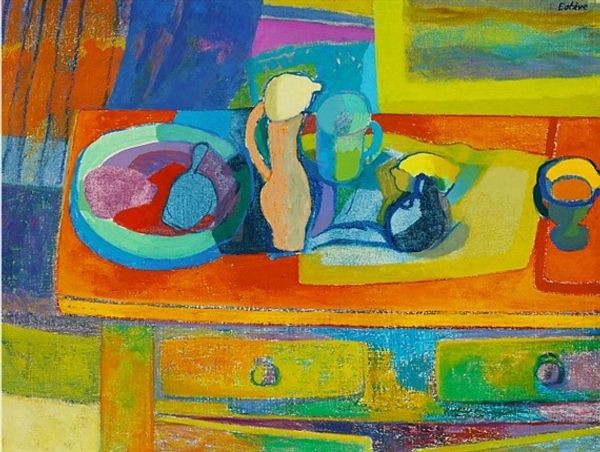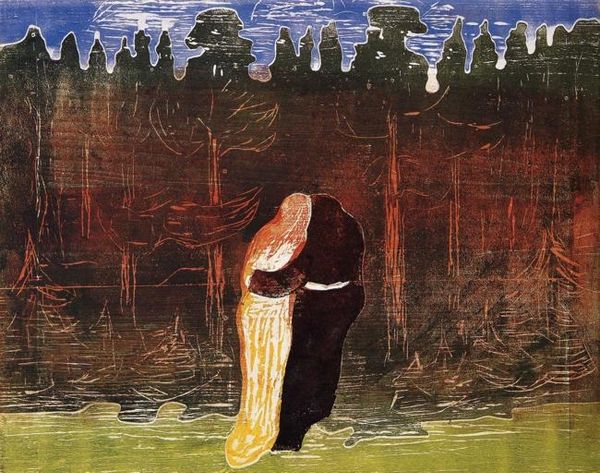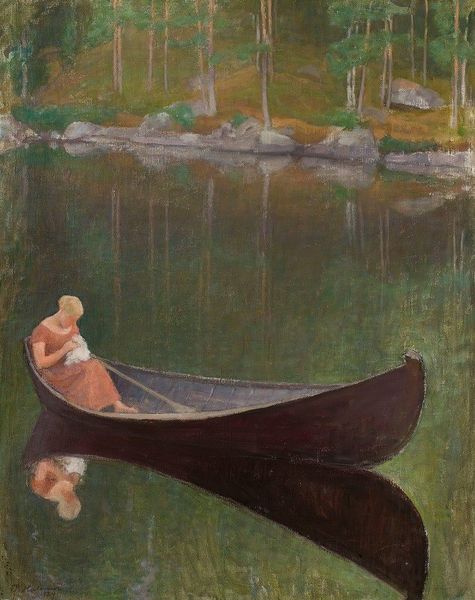
Copyright: Public domain
Editor: This is "Na stráni," or "On the Slope," painted by Josef Čapek in 1937. It’s an oil painting, and I’m immediately struck by how dreamlike the landscape feels, almost like a memory. What do you see in this piece, considering the time it was created? Curator: Well, considering its historical context, this painting is fascinating. Čapek was deeply concerned with the rise of totalitarianism in Europe during the 1930s. The seemingly simple scene of figures on a hillside can be viewed through that lens. How do you think the style relates to these socio-political concerns? Editor: I guess the simplified forms and almost childlike perspective might be a commentary on the innocence being lost during that time? Or maybe a longing for a simpler past? Curator: Exactly! The apparent naiveté is deliberate. Čapek and other modernists often employed such techniques as a form of social critique. They are questioning the values of progress and industrial society, perhaps even highlighting the fragility of human existence against impending catastrophe. Do you notice any other formal elements which amplify such meaning? Editor: I see how the swirls of paint in the sky kind of create a sense of unease despite the bright colors used overall, they could also be clouds of smoke? It makes me think about impending danger. Curator: Precisely. Čapek, who died in a concentration camp, saw art as inherently linked to social responsibility, even in a landscape. Considering this historical perspective it changes how we understand genre painting. Editor: I hadn’t considered it in that context, but knowing the history makes me see it in a new, much more profound way. It’s definitely more than just a landscape. Curator: Indeed, it becomes a silent, poignant commentary on a world on the brink. Seeing art through this wider lens changes everything.
Comments
No comments
Be the first to comment and join the conversation on the ultimate creative platform.
